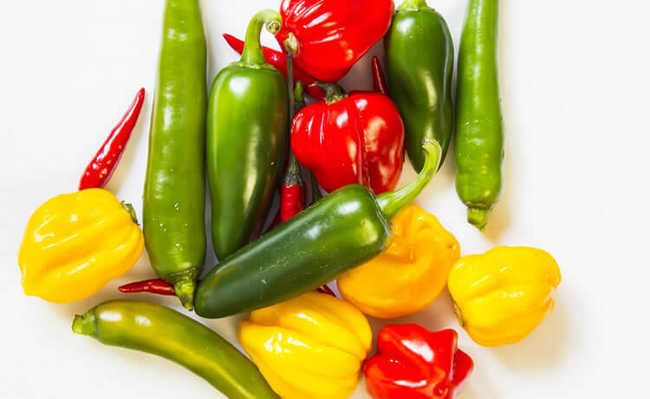Free access book presents the stunning plants of the Cerrado
Intended for free distribution and available in PDF, the work was made with the objective of disseminating Cerrado biodiversity

Collage of photos taken from the book Small Plants of the Cerrado: neglected biodiversity
"People only value what they know." It was this thought that inspired researcher Giselda Durigan to coordinate the collective endeavor that resulted in the book Small Cerrado Plants: Neglected Biodiversity .
With 720 pages, almost all illustrated with stunning color photos, the book presents an exhaustive survey of the small plants that are the mainstay of the Cerrado.
Intended for free distribution to libraries, research institutes and scholars, and also available in an open PDF file for all interested parties, the publication was financed by the São Paulo State Secretariat for the Environment.
Durigan, a researcher at the São Paulo State Forestry Institute, explains that the publication is the result of nearly a decade of work by several hands, which began with a doctoral research on the impact of the invasion of Cerrado's rural physiognomies by trees from pine and gained substance over three other surveys supported by FAPESP.They were:
- “Evaluation of the potential of natural remnants as sources of propagules for the restoration of cerrado countryside physiognomies”;
- “Invasion of the cerrado field by brachiaria (Urochloa decumbens): loss of diversity and experimentation with restoration techniques”;
- “Effect of prescribed burning and frost on the diversity and structure of the Cerrado herbaceous-shrub layer”.
“When we engaged in these researches, we realized that the great impact caused by biological invasions [ Learn more at agencia.fapesp.br/27156 ] and by fire suppression [More information at agencia.fapesp.br/26325 ] was not about trees, but about small plants in the field. And that was a huge challenge, because the nomenclature and classification of these plants were largely unknown. I had spent my entire professional life looking up at trees. So I had to look down, and with a lot of respect”, said Durigan to FAPESP Agency.
Professor in postgraduate programs in Forest Science at the Universidade Estadual Paulista (Unesp) and in Ecology at the State University of Campinas (Unicamp), she has been studying the Cerrado for over 30 years.
The group that coordinated the creation of the book was made up of his students Natashi Aparecida Lima Pilon and Geissianny Bessão de Assis, and by his colleagues Flaviana Maluf de Souza and João Batista Baitello.
“What we call 'small plants' are species that become adults and capable of reproducing less than 2 meters tall. It was an arbitrary criterion that we adopted. We started by collecting these plants, and inventing tentative names for them, while chasing people who could help us identify them,” says Durigan.
But it was not easy to find these people, says the researcher. There were simply no small plant specialists. It was necessary to resort to manuals, monographs, old books and the famous Dictionary of Useful Plants in Brazil, in six volumes, published by Manoel Pio Corrêa at the beginning of the last century.
“We found plants that had never been registered in the State of São Paulo and others that had not been collected for several decades. But we didn't find any new species, unknown to science. All already had their scientific names. However, it was a tremendous quest to discover the popular names. Many of the plants we found were classified as 'weeds' in these old books, because the perspective adopted was that of those who wanted to cultivate the Cerrado with pastures or agriculture,” said Durigan.
A curious term found was “forest pasture”, which named no less than seven different species, all of them very resistant. As these plants regrow numerous times after being cut, they were considered weeds. And the popular name they received reversed the chronological order, as if the pasture had appeared before and the plants had appeared later to get in the way, when it had been exactly the opposite.
“What people didn't understand – and we have made a huge effort to clarify – is that these small plants are fundamental to the survival of the Cerrado and the extraordinary wealth it has in terms of water resources and biodiversity,” said Durigan.
“There is talk of deforestation when trees are cut down. But if the small plants are eradicated, the entire balance of the Cerrado is broken. And this is happening without the slightest impediment because the legislation does not protect vegetation that does not have trees. In addition, this vegetation does not even appear on the maps, given the technological limitations to differentiate it from pastures or agriculture in satellite images”, he added.
Six small plants for a tree
Durigan emphasizes that it is the small plants that cover the soil, preventing erosion by rain or wind.
“They have a tangle of roots, facilitating the infiltration of water into the soil and ensuring the health of the ecosystem and the maintenance of the springs that feed the rivers. In order to be a savanna, the Cerrado needs to have two layers: the layer of sparse trees at half height and the layer of small plants covering the ground”, he explained.
According to the authors of the book, the ratio is six species of small plants for each species of tree. Of the 12,734 plant species that make up the Cerrado, more than 10 thousand correspond to small plants. They are threatened by the densification of treetops, resulting from inadequate management, and by invasion by exotic species such as pine and brachiaria.
The aim of the book is to delight readers with the beauty of these small plants. And make them aware of the need for their preservation.- Access the book in its entirety










